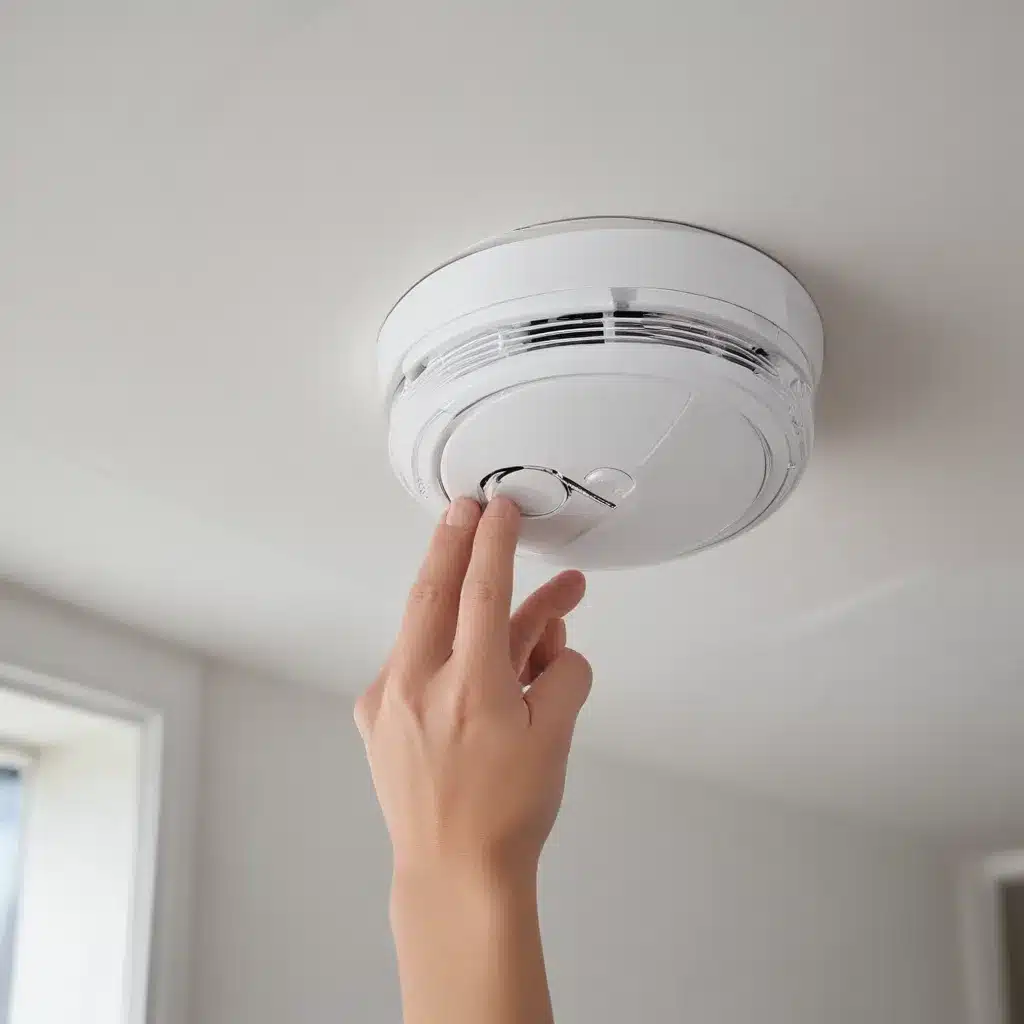
The Unsung Heroes of Home Safety
Picture this: You’re fast asleep, dreaming of your next DIY project at the https://abc-home.co.uk showroom, when suddenly a shrill alarm jolts you awake. Your heart races as you realize there’s smoke filling the hallway. Without a moment’s hesitation, you spring into action, rounding up your family and making a beeline for the nearest exit.
Thankfully, your trusty smoke alarms were there to sound the alarm and give you precious seconds to escape. These unsung heroes of home safety are often taken for granted, but they play a vital role in protecting our loved ones and our most prized possessions.
The Science Behind Smoke Alarms
Have you ever wondered how these little devices work their magic? It’s actually pretty fascinating. There are two main types of smoke alarms – photoelectric and ionization – and they each have their own unique way of detecting fires.
Photoelectric smoke alarms use a beam of infrared light and a light sensor. When smoke particles enter the chamber, they scatter the light beam, triggering the sensor and setting off the alarm. These alarms are particularly good at detecting slow, smoldering fires that produce a lot of visible smoke.
Ionization smoke alarms, on the other hand, rely on a small amount of radioactive material to ionize the air inside the chamber, creating a steady flow of electric current. When smoke enters the chamber, it disrupts this flow, setting off the alarm. These alarms are better at detecting fast, flaming fires that produce less visible smoke.
For optimal protection, the experts recommend having a mix of both types of smoke alarms throughout your home. That way, you’re covered for all kinds of fire scenarios.
The Importance of Proper Placement
Once you’ve got your smoke alarms, the next step is making sure they’re installed in the right spots. According to the National Fire Protection Association, they should be placed on every level of your home, inside and outside of bedrooms, and within 15 feet of each sleeping area.
It’s also crucial to keep them away from windows, doors, and heating/cooling vents, as these can interfere with their ability to detect smoke. And don’t forget to test them monthly and replace the batteries at least once a year – or whenever they start chirping to let you know they’re running low.
The Evolution of Smoke Alarm Technology
These days, smoke alarms have come a long way from the simple battery-powered models of the past. The latest smart home technologies have brought a whole new level of sophistication to these life-saving devices.
For example, some smoke alarms can now connect to your home’s WiFi network, allowing you to receive instant smartphone alerts if they’re triggered, even when you’re not home. Others feature built-in voice commands, letting you test or silence the alarm with a simple voice prompt.
And let’s not forget about the needs of our friends and family members who are deaf or hard of hearing. Special smoke alarms with flashing lights or vibrating bed/pillow shakers ensure that everyone in your household can be alerted in an emergency.
The Unbreakable Bond Between Smoke Alarms and Home Safety
At the end of the day, smoke alarms are the silent sentinels of home safety, always vigilantly watching over us and our loved ones. They may not be the most glamorous home security gadgets, but they’re undoubtedly among the most important.
So, the next time you hear that familiar beeping sound, don’t just ignore it and change the battery. Take a moment to appreciate the incredible life-saving power of these humble devices. And if you don’t have enough smoke alarms in your home, head on over to https://abc-home.co.uk to find the perfect ones for your family’s needs.
After all, when it comes to protecting what matters most, a little piece of mind is worth its weight in gold.
















